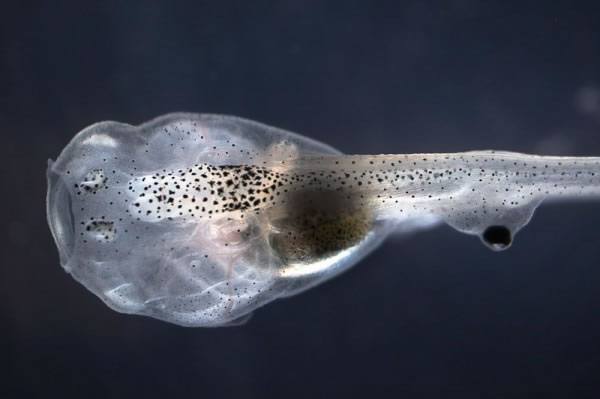Do eyes have to be in the head for them to work? Not according to this
strange research by Michael Levin of Tufts Center for Regenerative and
Developmental Biology! His team implanted an ectopic eye in the tail of
a tadpole and found that it works just fine:
For the experiment, the team surgically grafted “eye primordia”
from donor tadpole embryos onto host embryos, 95 percent of which grew
eyes on their tails.
The team then used red and blue LEDs to condition the tadpoles to associate
red light with a mild electric shock.
Consequently, both tadpoles with normal eyes and those with ectopic
eyes developed an aversion to red light and learned to avoid red-lit
areas—meaning that the tadpoles with tail “eyes” could
see. In contrast, a control group of eyeless tadpoles did not learn
to avoid red light.
The spine is known to transmit all kinds of sensory information throughout
the body, but the 64,000-eyeball question is how the brain recognizes
the signals from the far-flung ectopic eyes for what they are. [...]
“What is really interesting is how the brain knows it is visual
data,” said Levin
NatGeo's Weird & Wild Blog has the story:
Here.


No comments:
Post a Comment